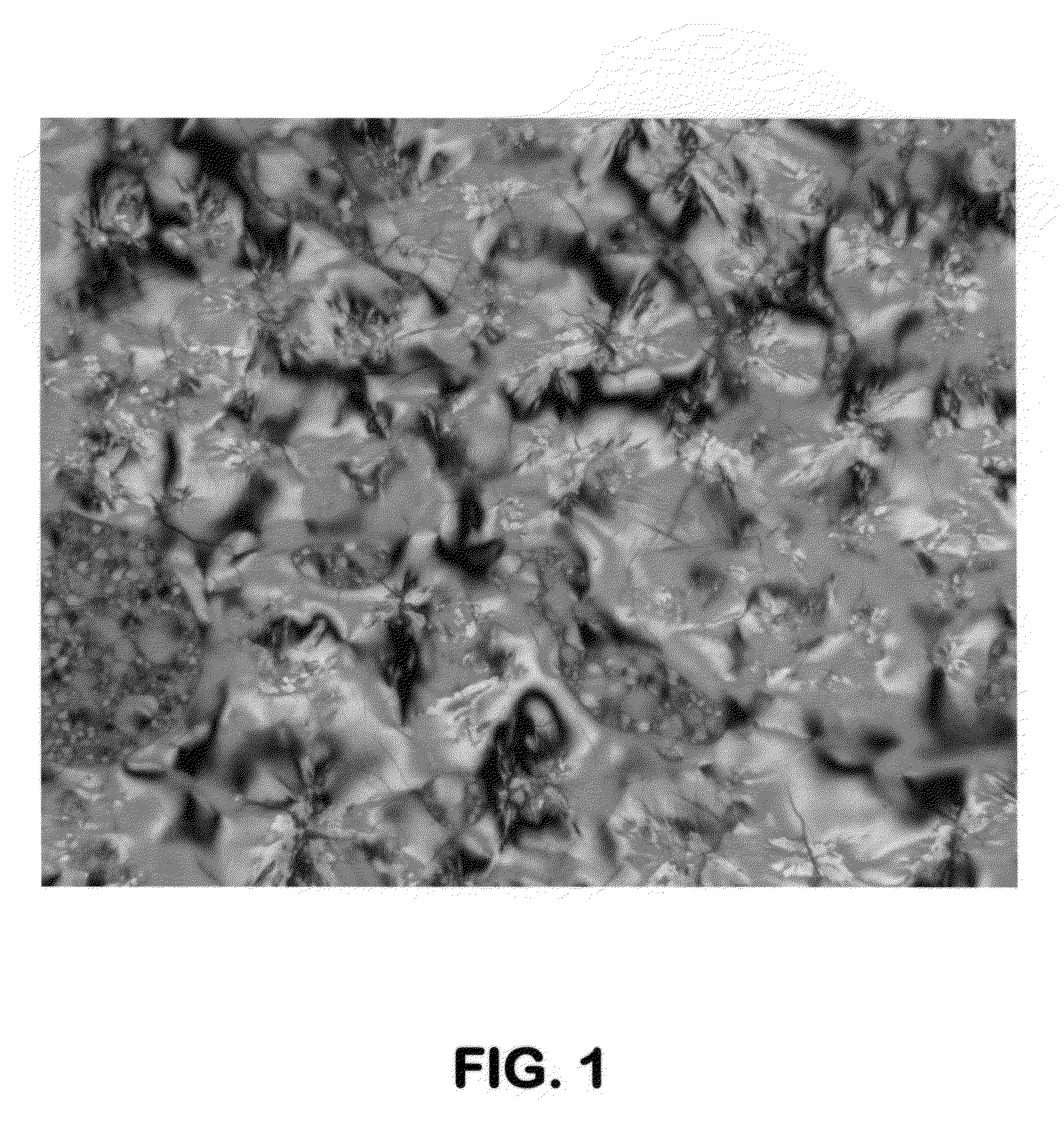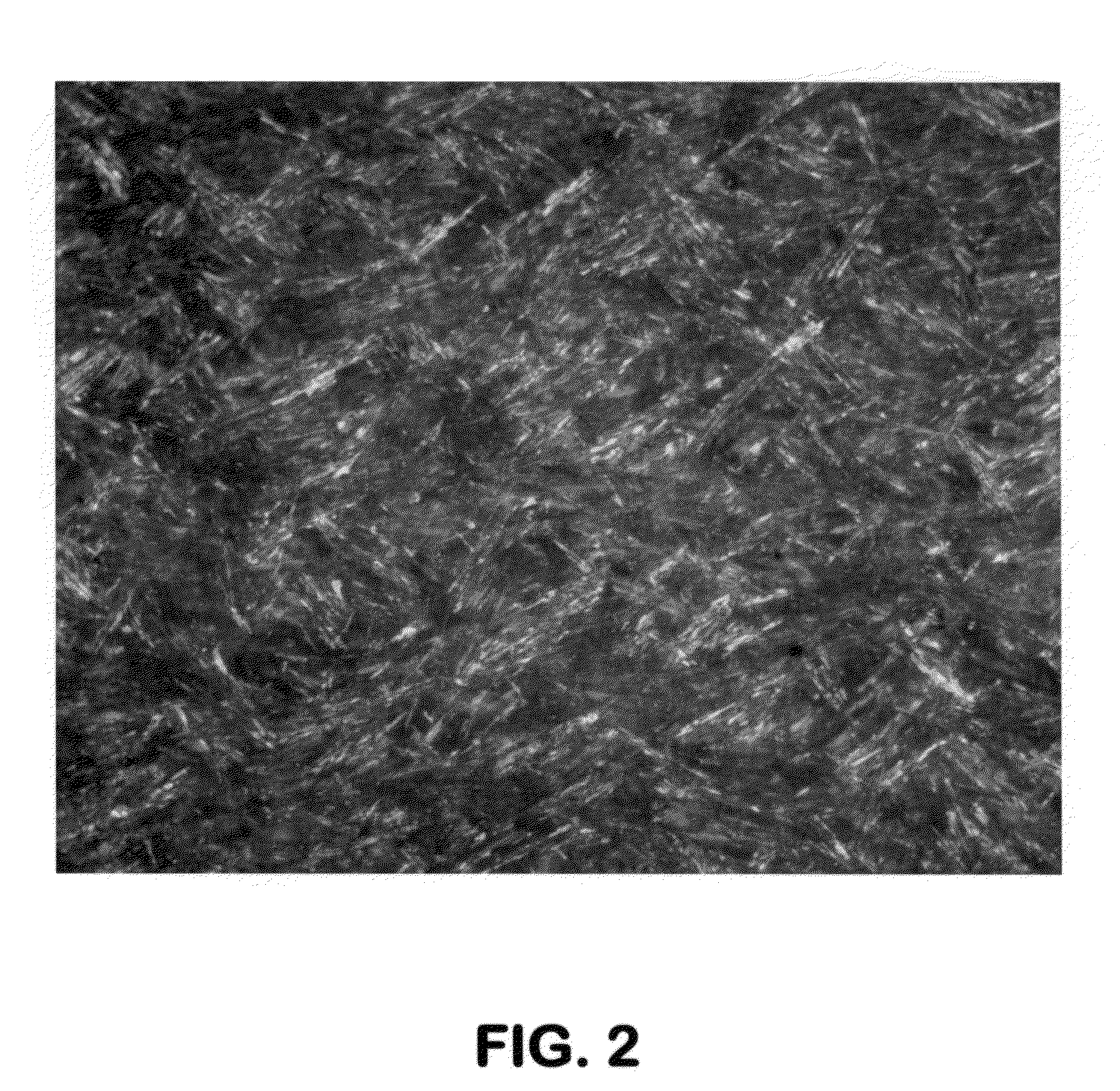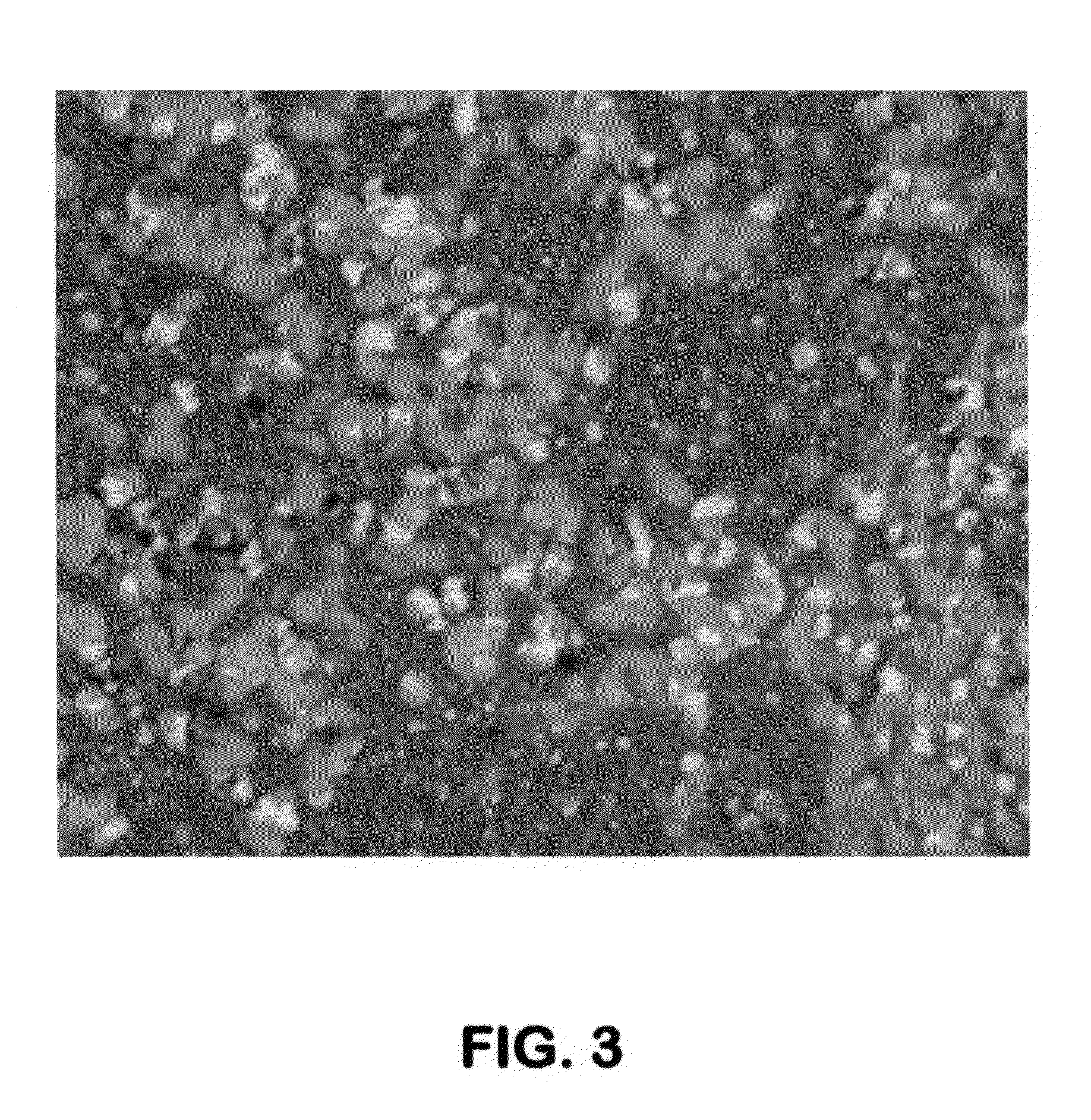Delayed coking process for producing free-flowing coke using low molecular weight aromatic additives
a coke and aromatic additive technology, applied in cracking process, coke carbonaceous materials, hydrocarbon oil treatment, etc., can solve the problems of increasing the coke removal step adds considerably to the throughput time and cost of the overall process, so as to facilitate the solubilization of additives and reduce the viscosity of resid
- Summary
- Abstract
- Description
- Claims
- Application Information
AI Technical Summary
Benefits of technology
Problems solved by technology
Method used
Image
Examples
example 1
[0047]In a first set of experiments two model polynuclear aromatic (PNA) compounds 1 (PET) and 2 (PDI) that are known and reported to form mesophases at temperatures in the range of 100° C. to 450° C. were used to demonstrate that a PNA mesophase intermediate is involved in the formation of anisotropic mesophase coke. The model perylene PNA compounds are shown below.
[0048]
[0049]The crystalline compound PTE, exhibits a liquid crystalline or mesophase between 140° C. to 315° C. PTE was heated to 400° C. for 2 hours in a Microcarbon Residue (MCR) unit. Coke residue (60.4%) was obtained. A photomicrograph of the coke residue as observed under a cross polarized light microscopy for PTE residue is shown in FIG. 1 hereof. We observed an anisotropic coke morphology of medium sized domains (10-25 μm) with isolated regions of mesophase spheres (1-6 μm) indicating that a PNA mesophase intermediate is involved in the formation of anisotropic coke.
[0050]The crystalline compound PDI exhibits a li...
example 2
[0051]In this set of experiments, untreated sweet vacuum resid, Sweet VTB, and toluene additized Sweet VTB (460 ppm) were used. Additized Sweet VTB was prepared by adding 20 mL of toluene to 10 g of resid and then evaporating the toluene at 100° C. for 24 hours. GC analysis of the residue showed a 460 wppm of residual toluene “bound” or “occluded” in the resid. This toluene-occluded resid was heated to 400° C. for 2 hours in an MCR unit. Coke residue (24.4%) was obtained. A photomicrograph of the coke residue as observed under a polarized microscope obtained from this experiment is shown in FIG. 3 hereof. Photomicrograph of the coke residue as observed under a polarized microscope for the control run with no toluene additization is shown in FIG. 4 hereof. Comparing FIGS. 3 and 4, we observe a much enhanced anisotropic coke morphology indicating that the occluded toluene enhances the formation of anisotropic coke. Based on out first set of experiments on the model compounds and the s...
PUM
| Property | Measurement | Unit |
|---|---|---|
| temperature | aaaaa | aaaaa |
| pressure | aaaaa | aaaaa |
| pressure | aaaaa | aaaaa |
Abstract
Description
Claims
Application Information
 Login to View More
Login to View More - R&D
- Intellectual Property
- Life Sciences
- Materials
- Tech Scout
- Unparalleled Data Quality
- Higher Quality Content
- 60% Fewer Hallucinations
Browse by: Latest US Patents, China's latest patents, Technical Efficacy Thesaurus, Application Domain, Technology Topic, Popular Technical Reports.
© 2025 PatSnap. All rights reserved.Legal|Privacy policy|Modern Slavery Act Transparency Statement|Sitemap|About US| Contact US: help@patsnap.com



